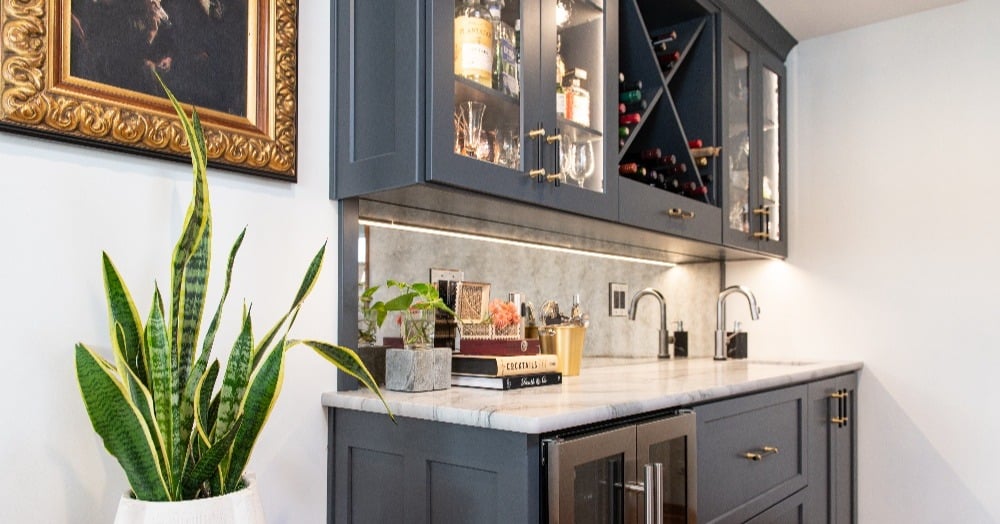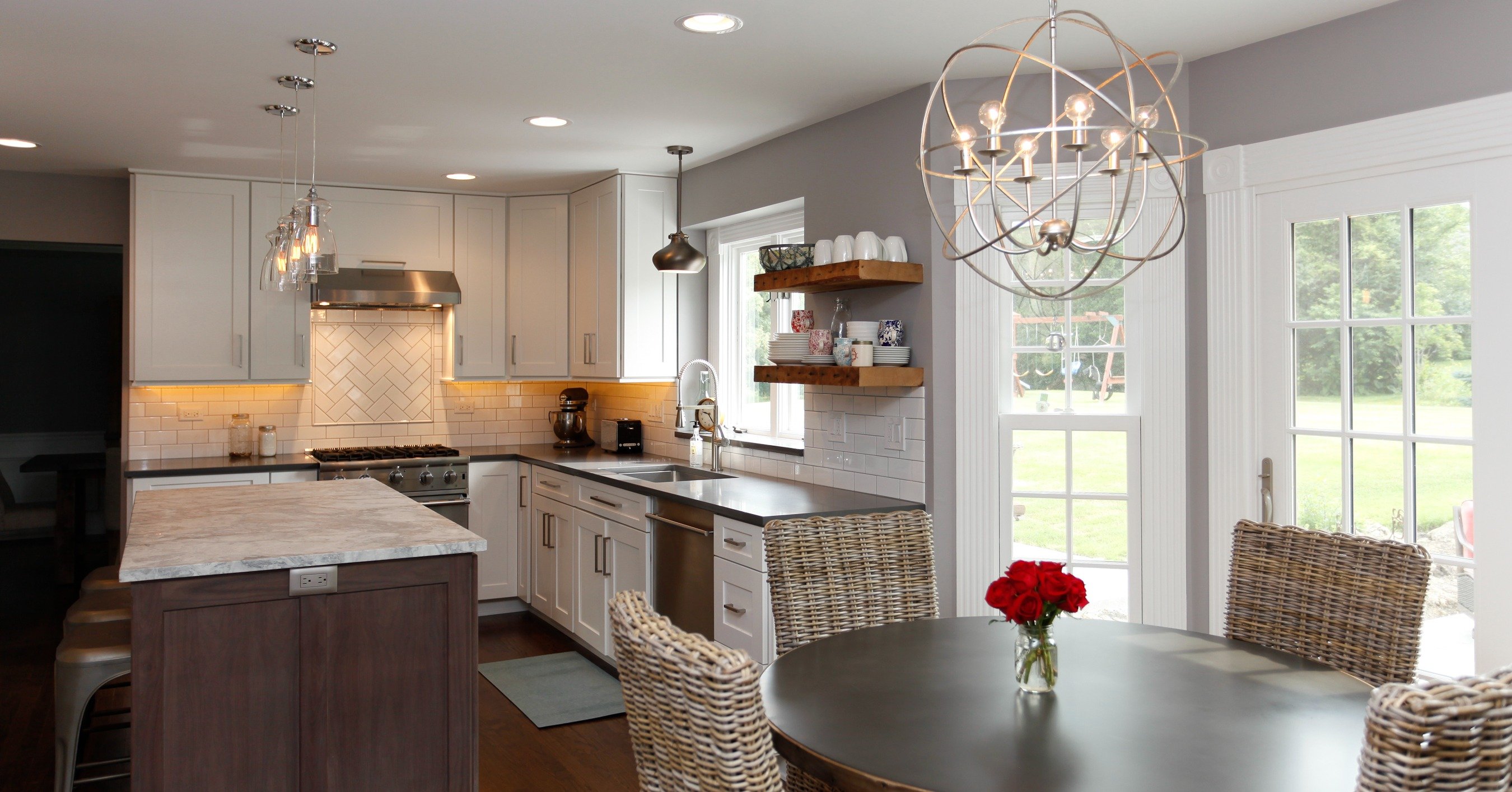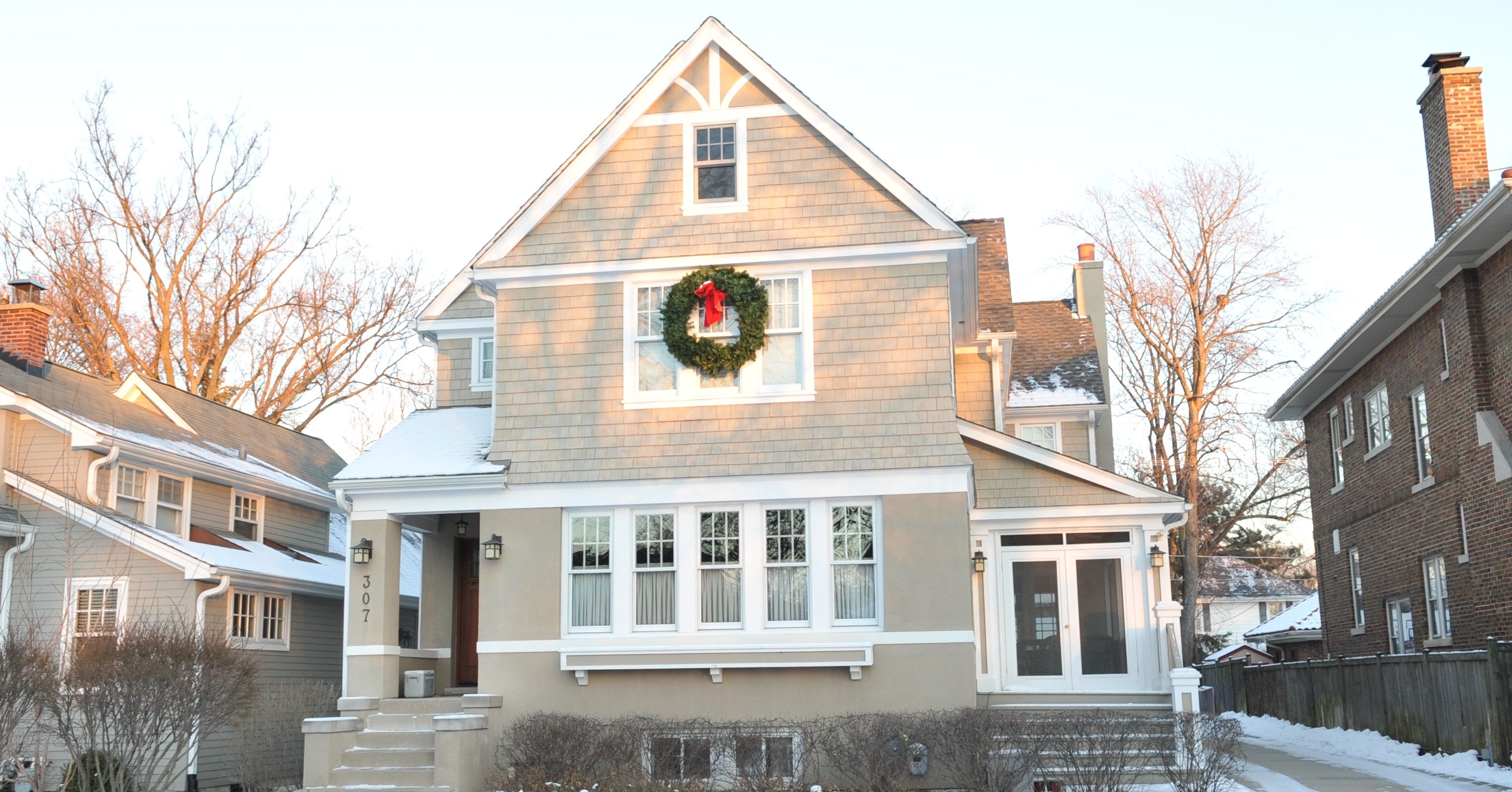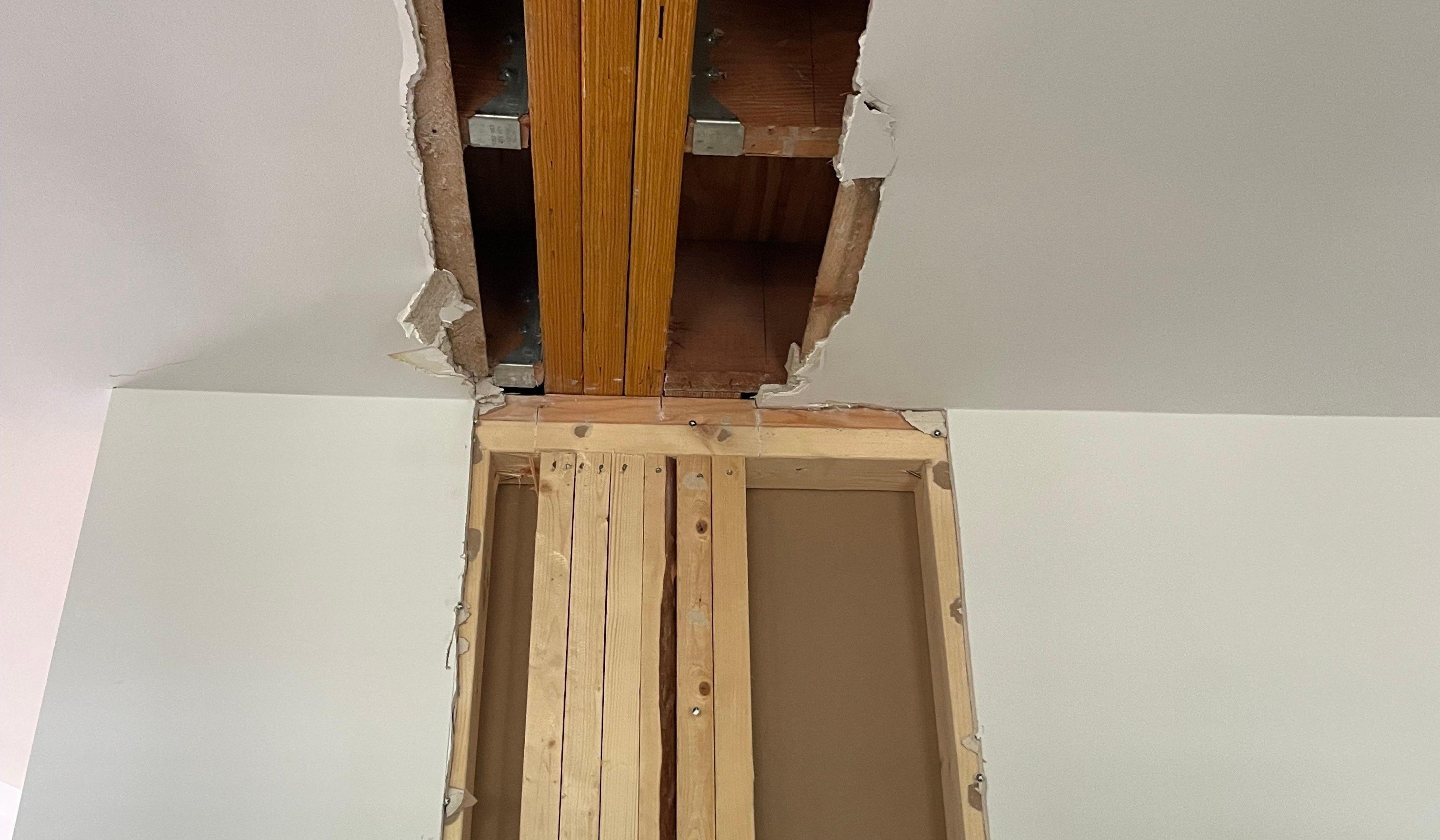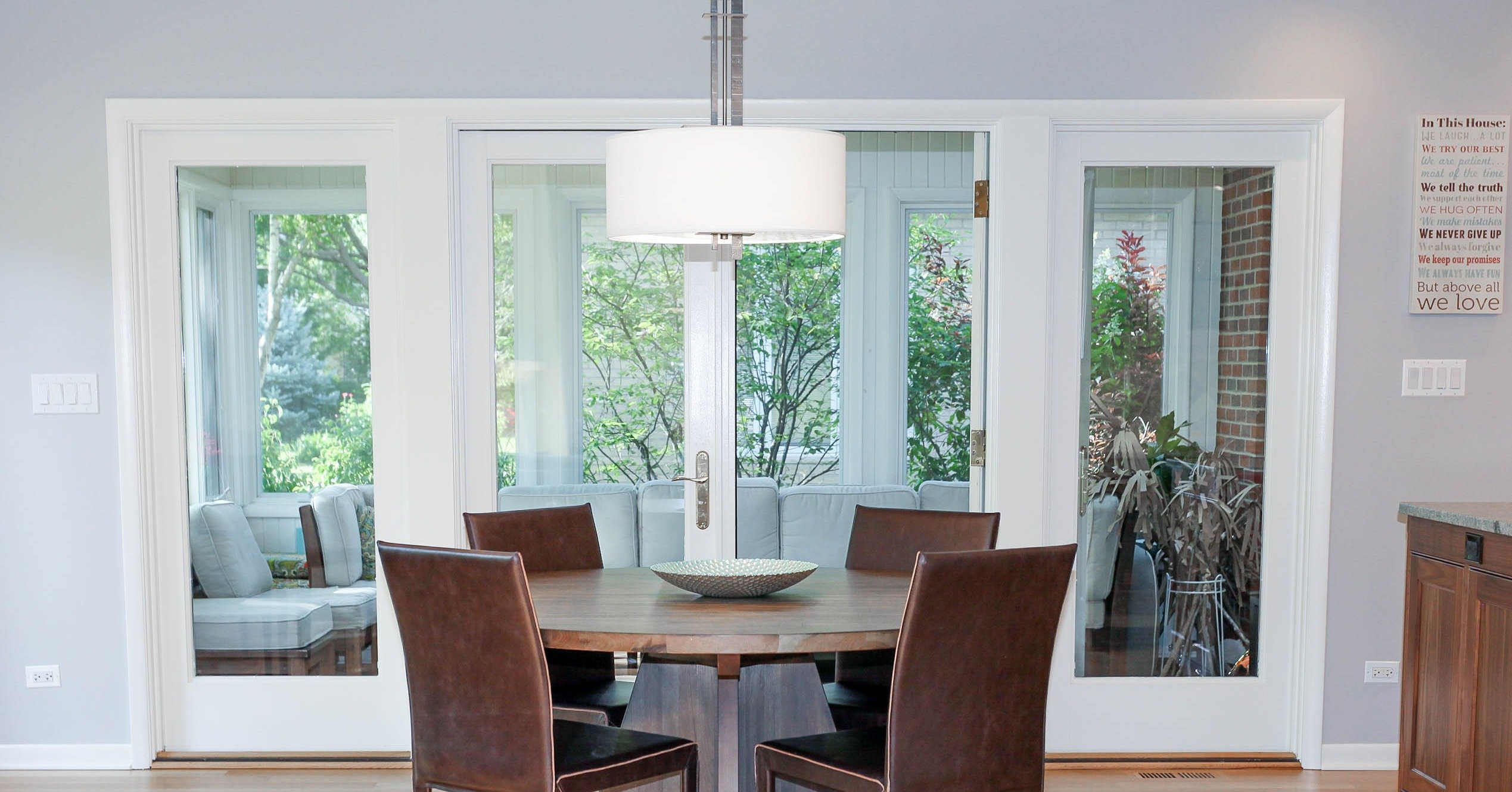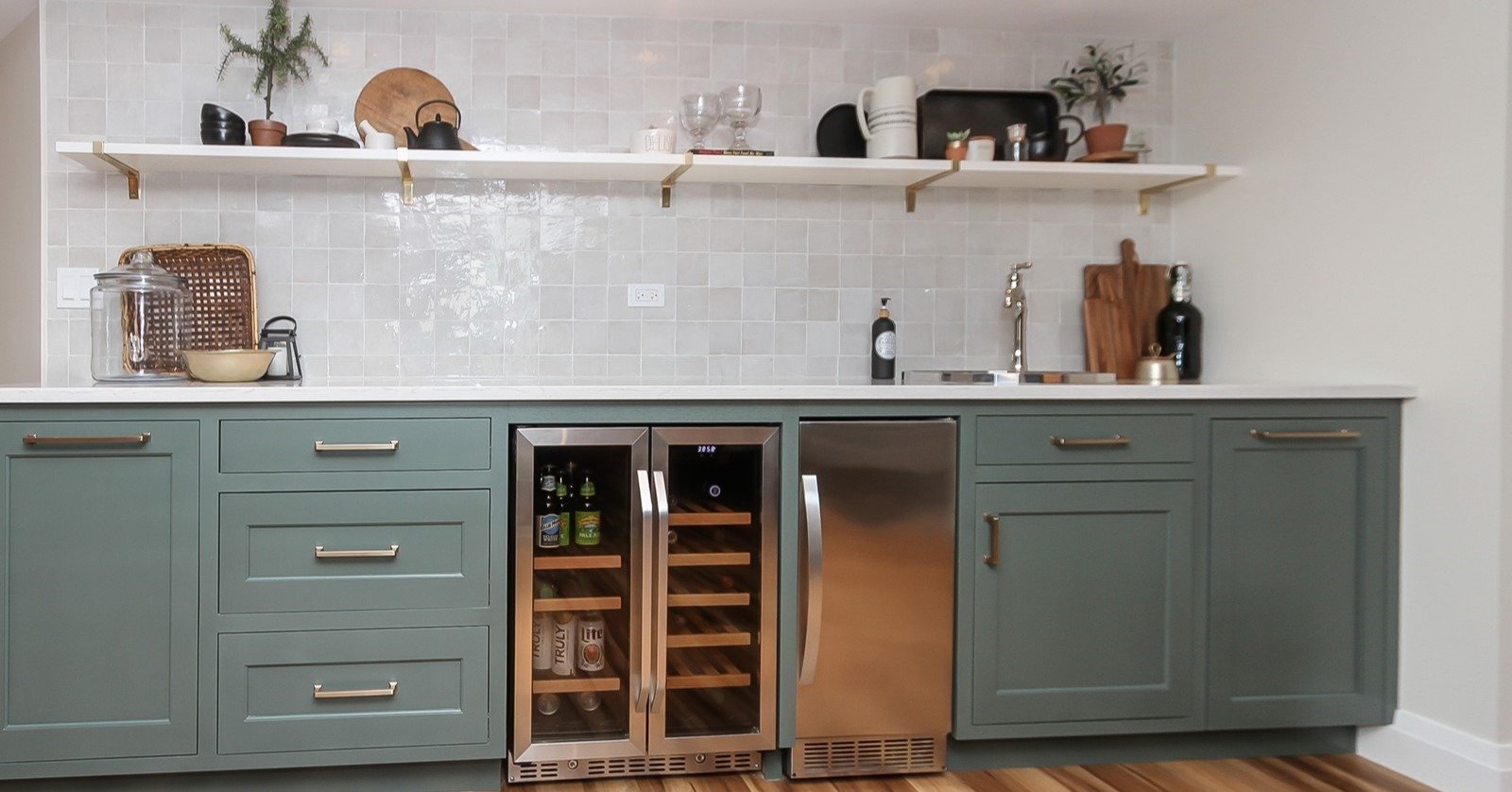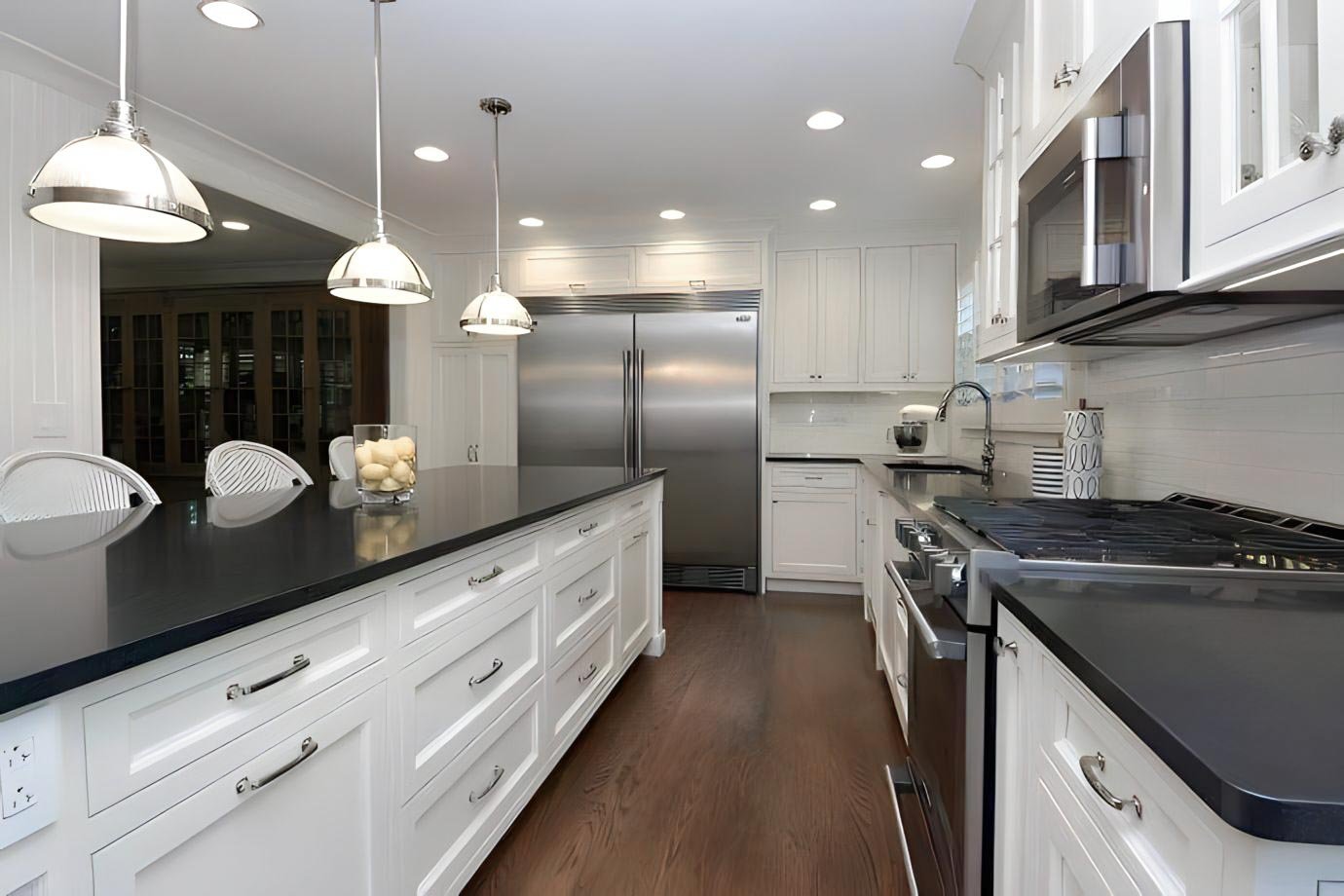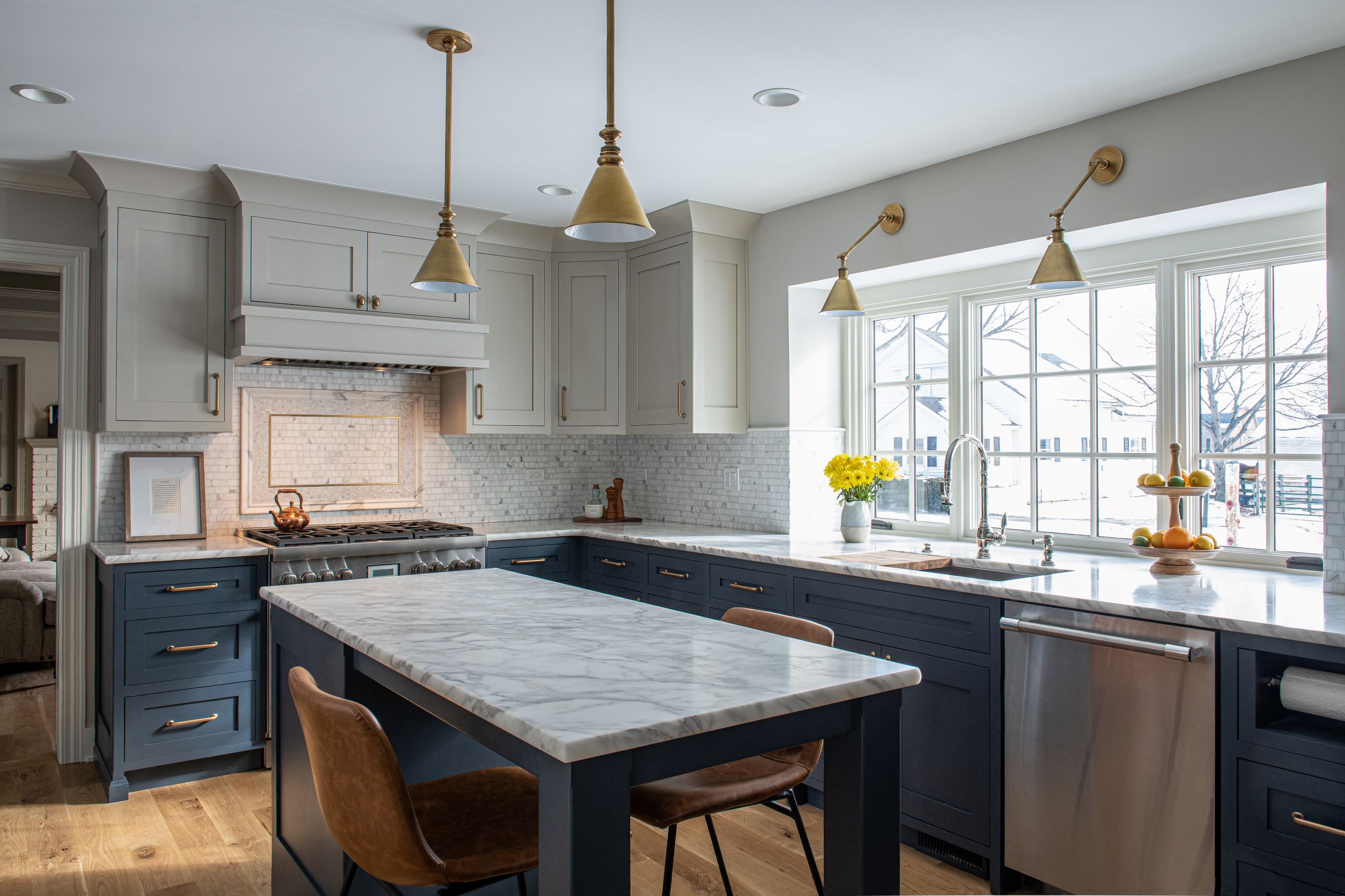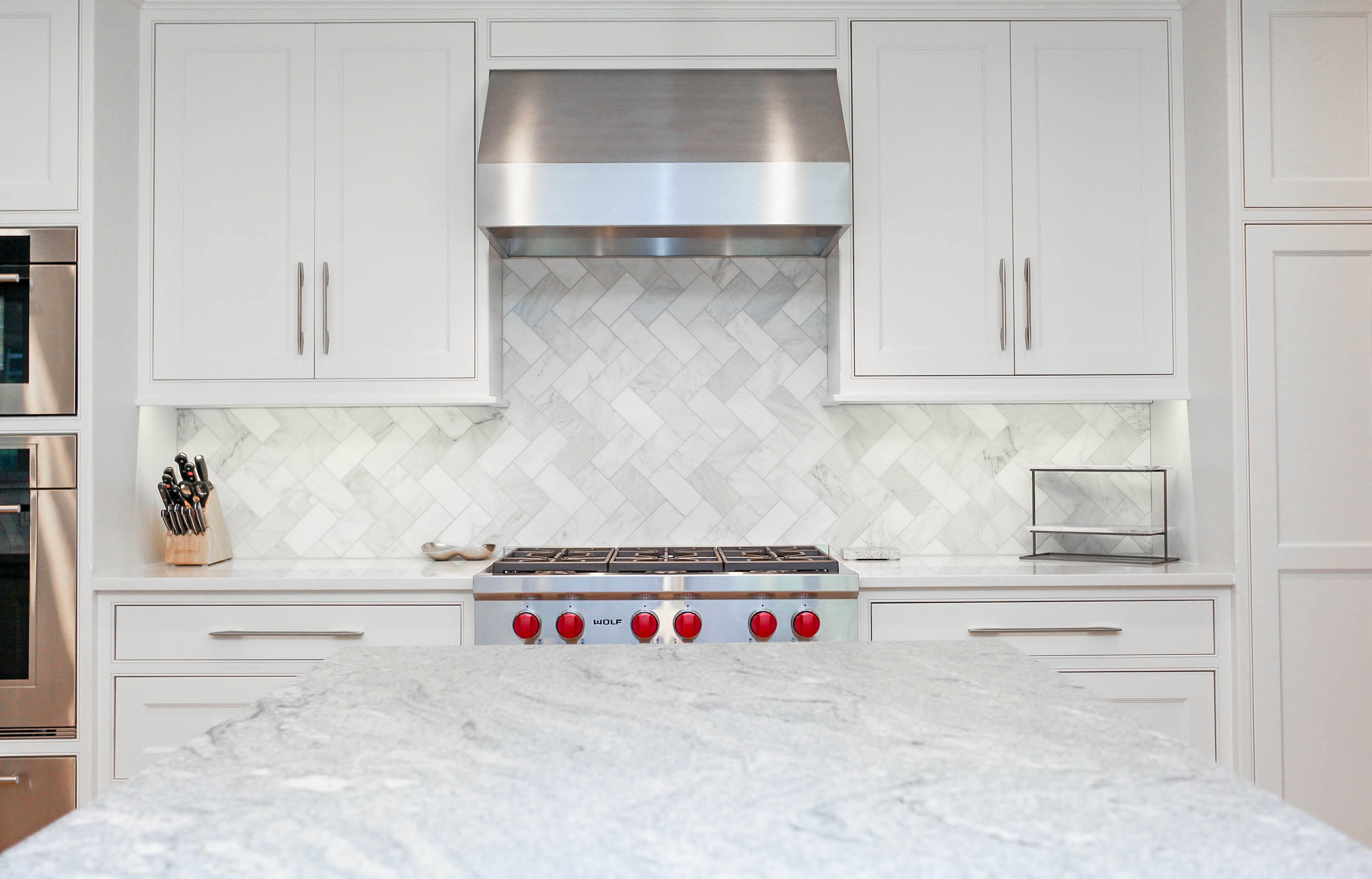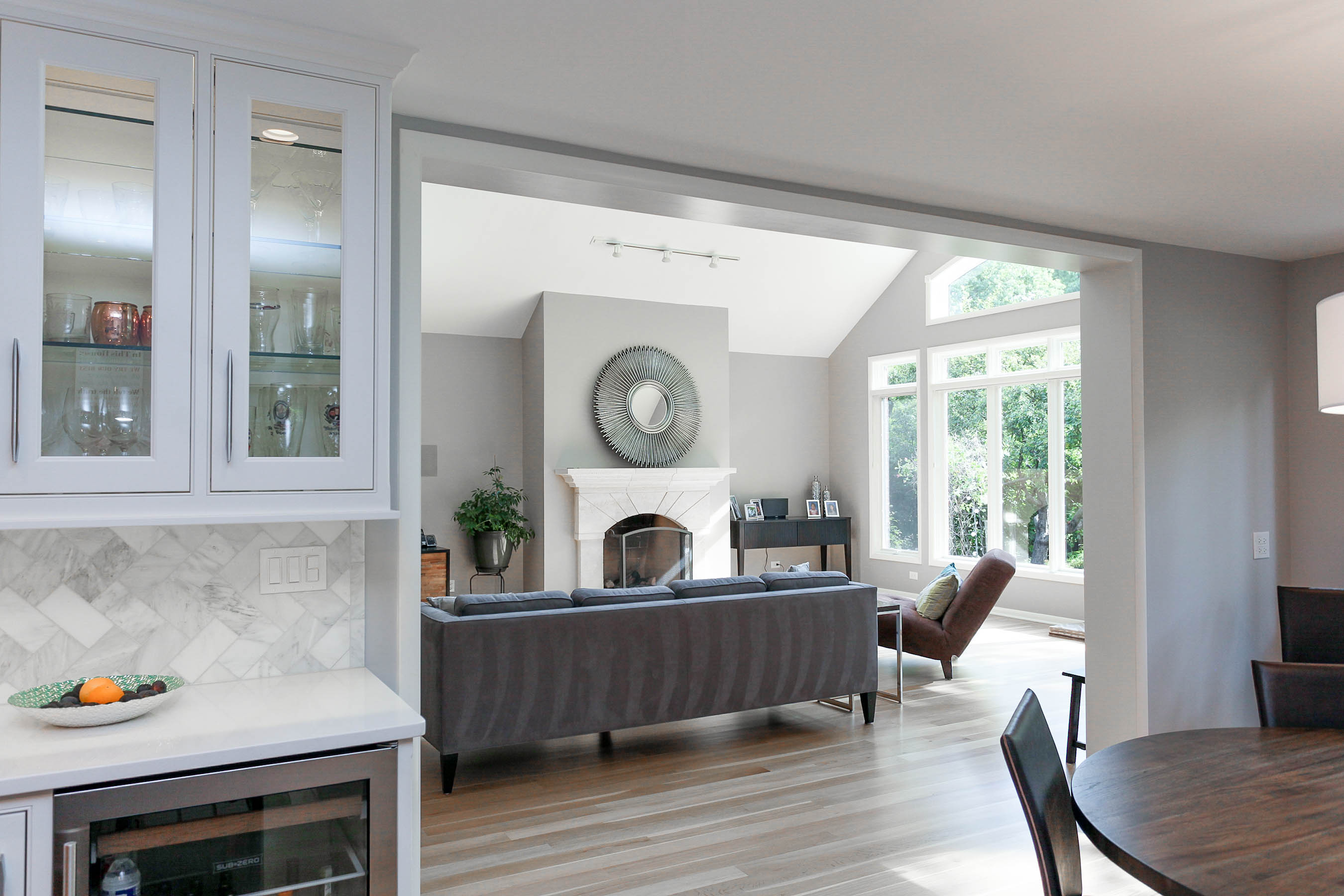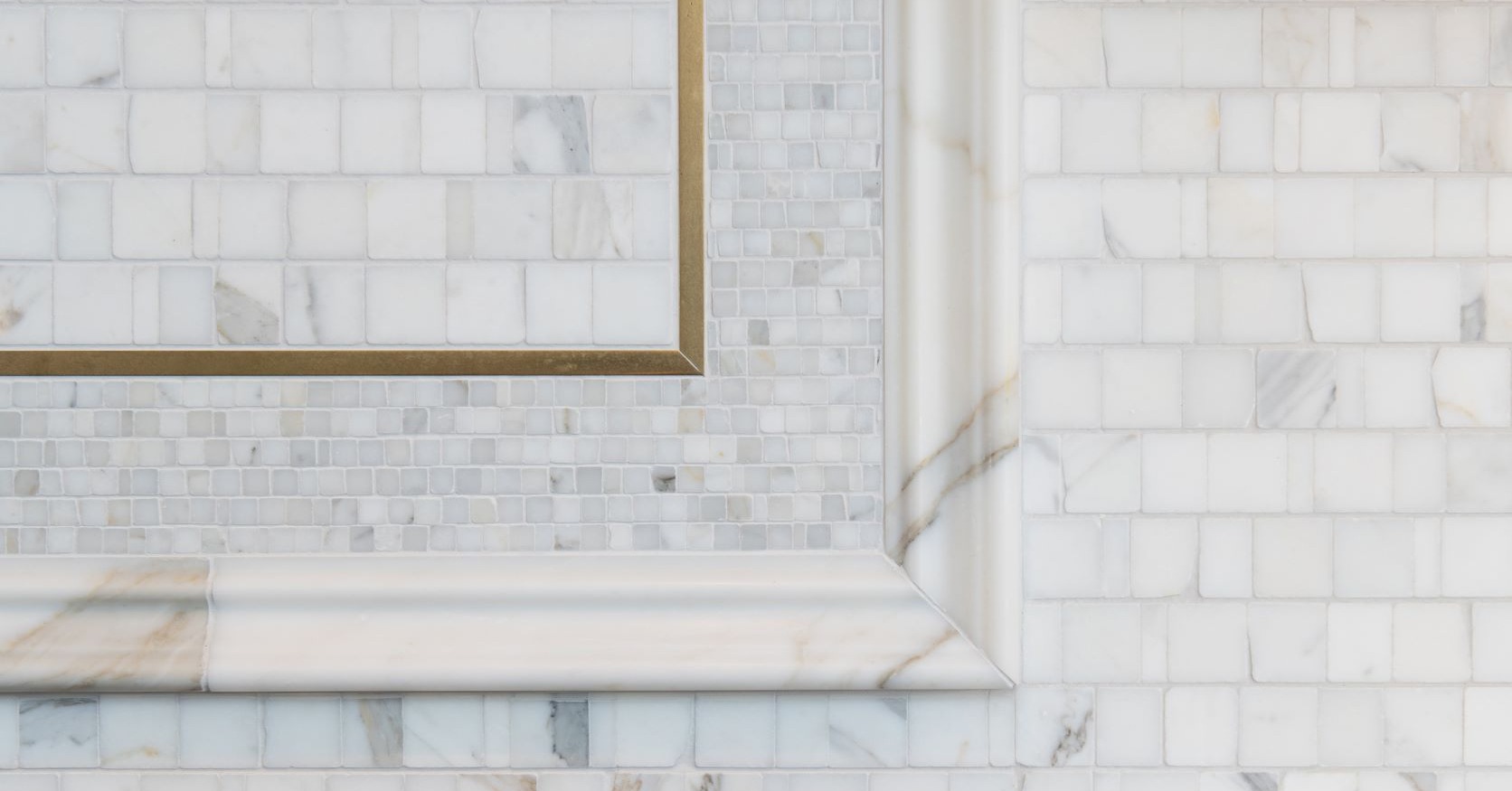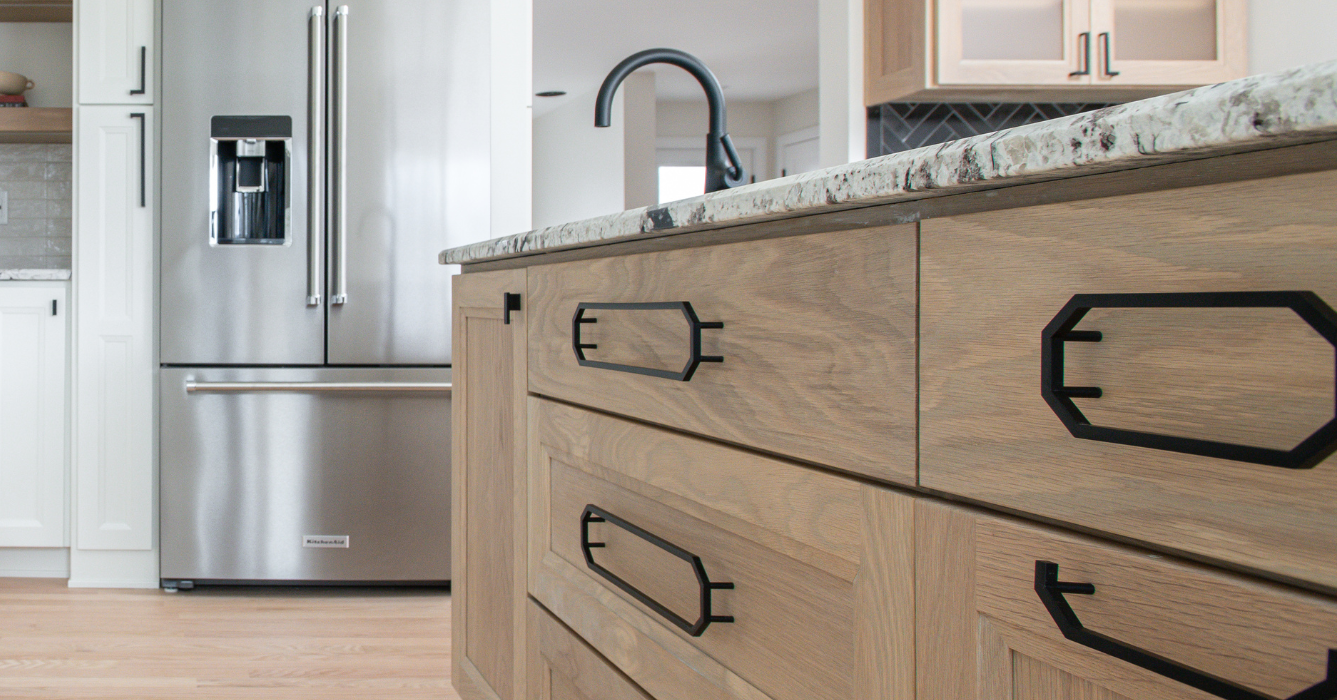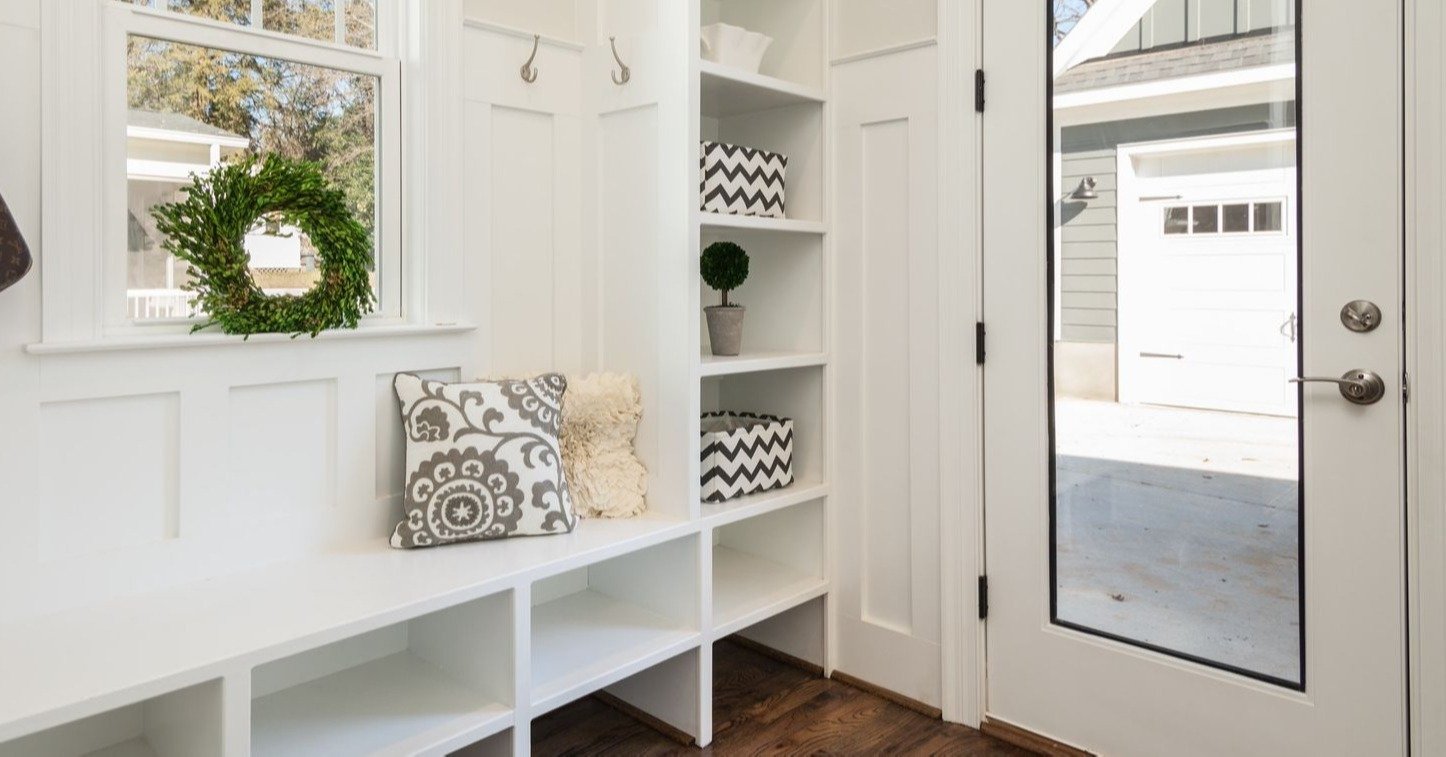Home Gym Renovation Guide: Design A Workout Space That You Will Actually Use

Listen to the Blog Post
Picture this: It’s 5 AM and your alarm goes off. You meant to hit the gym, but now you’re weighing drive time, parking, and whether you’ll make it back before that morning meeting.
Sound familiar?
Over the years, we’ve worked with many homeowners who feel like their fitness goals are constantly derailed by logistics. Commutes, crowded peak hours, and family schedules make that monthly membership more frustrating than useful.
A well-designed home gym renovation can solve that. Whether it’s a quiet early-morning workout while the kids sleep or a quick lift between meetings, having a dedicated space just steps away makes staying active easier and more realistic.
The key to building a home gym you’ll actually use? Smart planning. In this guide, we’ll walk you through how to create a space that fits your lifestyle, your home, and your goals.
Table of Contents
-
A Successful Home Gym Renovation Requires Proper Flooring and Infrastructure
- Key Takeaways: Home Gym Renovation
Why Homeowners Are Ditching the Gym Membership
Most of our clients aren’t just throwing a yoga mat and some dumbbells in a spare room; they’re replacing their gym memberships altogether.
Why? Because a well-designed home gym solves some real challenges:
-
Busy schedules: Between kids, work, and life, getting to the gym isn’t always realistic. Our clients want a space they can use early in the morning, after bedtime, or in between meetings—no commute required.
-
Childcare limitations: Even if your gym offers childcare, it’s often limited, crowded, or not available during off-peak hours. Let’s be honest—those gym childcare spaces are often a breeding ground for germs. And once one kid gets sick, it usually snowballs into missed school, missed work, and an entire household thrown off for a week (or more).
-
Weather challenges: In Illinois, winter alone can be enough to throw off a good fitness routine. With a home exercise room, snow and cold don’t become excuses; they actually turn into motivation to stay inside and stay active.
-
Comfort and privacy: A public gym works for some, but for others, it’s far from motivating. Whether it's loud music, having to wait in line for specific workout equipment, or judgmental glances, a home workout room offers a space that feels safer, cleaner, and more relaxed.
-
Savings that add up: Building a home gym can be a smart financial move over time. Without monthly membership fees from yoga studios, Pilates classes, or public gyms, you immediately cut recurring costs. You’ll also save on gas, parking, and vehicle wear by eliminating the daily commute. And because your workout space is just steps away, you’re more likely to stick with your routine, making the most of your initial investment. Plus, fewer trips out mean fewer impulse purchases—like post-workout smoothies or gear you didn’t plan on buying. It all adds up to more savings, more consistency, and better results.
What Do You Want From Your Home Gym?
Before picking out equipment or planning layouts, ask yourself: Why do I want a home gym? The most successful spaces start with clear, honest goals—not impulse exercise equipment buys.
Do you want to build strength, improve cardio health, lose weight, or simply feel better day-to-day? One client told us she needed a full cardio setup for weight loss—it wasn’t until we asked these questions that she realized she hated running and actually loved lifting weights. Once we aligned her gym with what she actually enjoyed, she used it daily and met her real goal: feeling confident and strong.
Here are three questions to consider for a successful home gym design:
-
How often will you realistically use it? If you can commit to 3+ workouts a week, great. But be honest, your habits will shape your home gym setup—everything from layout to equipment.
-
What types of workouts do you actually enjoy? Do you love strength training? Make room for free weights and durable flooring. Prefer yoga? Prioritize open space and soft lighting. Hate cardio? Don’t buy a treadmill just because you think you should.
-
Will this replace or supplement your gym membership? Some homeowners keep both. A home gym can offer flexibility for busy weekdays, while in-person classes or a gym add variety and community. Know what motivates you—and plan accordingly.
By getting clear on how often you’ll use the space, what workouts you actually enjoy, and whether you’re replacing or supplementing a gym membership, you’ll avoid costly mistakes, such as buying equipment you’ll never use or creating a layout that doesn’t support your daily workout routine.
How to Choose the Right Space for Your Home Gym
The best home gyms are accessible and comfortable to use, not tucked away in a dark, damp, and smelly basement.
Choose a space that feels inviting and easy to access—not one you’ll avoid or dread using. Because in the end, a gym that matches your lifestyle is the one that gets used—and delivers results.
Basements: The Advantages
The basement emerges as the most popular location for a home gym renovation, and for good reasons:
-
Structural Support: Basements are ideal for home gyms because their concrete floors can easily handle the weight of workout equipment and free weights. This built-in strength eliminates the need to worry about the added weight to floor joists or the need to reinforce the structure.
-
Sound Dampening: Basements offer natural sound insulation, reducing noise transfer to the rest of the house. We often add sound-damping insulation between the basement and the first floor to help minimize any noise transfer. We recently completed a basement gym renovation where the homeowner told us, "I can blast music and drop weights without worrying about waking up the baby on the second floor." An exercise room built in the basement is an ideal space to add sound insulation.
-
Temperature Regulation: Basements naturally stay cooler in the summer because of their below-grade location and surrounding earth insulation. Unlike rooms exposed to direct sunlight or fluctuating outdoor temperatures, basements experience fewer temperature swings throughout the day. This natural stability makes it easier to maintain a comfortable environment without cranking the AC—an especially valuable feature during high-intensity workouts. The result is a more consistent and enjoyable workout space that encourages regular use throughout the year.
-
Space Availability: Basements typically offer the largest open areas in the home, making them ideal for setting up a full gym without crowding your main living space. Their natural separation from busy household zones also means fewer distractions and less chance of disrupting family routines, giving you the freedom to work out when and how you want.

Basement Considerations
While basements offer many advantages, they have a few considerations that must be addressed before you choose your gym’s location.
- Ceiling Height: In older homes, ceiling height can be an issue for equipment like treadmills and ellipticals. Modern homes typically have higher basement ceilings, but in older homes, this limitation might restrict equipment choices.
- Working Around Mechanicals: Basement gyms often require design considerations that account for existing mechanical systems, such as ductwork, plumbing, or support beams, which can impact ceiling height and layout. For example, if half the gym has lower ceilings to accommodate a steel beam and soffit, that space could be utilized for storage, a weight rack, and a bench to maximize functionality, without sacrificing space or aesthetics.
- Air Quality Challenges: Without proper ventilation, basements can feel stuffy and damp, which is hardly ideal for a workout. One client described it as “exercising in a cave” until we improved the airflow and addressed humidity with proper ventilation.
A smart approach is to create designated zones within your layout. Tuck cardio equipment, such as a bike into a small space, reserve a more open area for a mirror accent wall and free weights, and place taller weight lifting equipment, like a squat rack, where the ceiling height allows for a full range of motion.
Spare Room
If a basement isn’t an option, look for underused spaces like a guest room, home office, loft, or finished attic that could be converted into a workout area. These rooms often offer privacy, natural light, and built-in storage. With a few simple additions, like mirrors, mats, and compact equipment, you can create an effective and inviting fitness space. The main trade-off? You’ll lose a room that might be needed later as your family’s needs evolve.
Detached Structures
For those seeking maximum separation between the home and workout space, a detached gym can be a great solution. Converting a garage, shed, or building an accessory dwelling unit (ADU) gives you the freedom to create a dedicated fitness environment away from household distractions.
However, it’s important to be aware of local building codes and zoning regulations. While fitness equipment and bathroom access are typically permitted, features such as plumbing for a kitchenette, bathroom, or full HVAC systems may be restricted.
Dedicated Workout Zone
You don’t need a full room or expensive equipment to create an effective home gym. You just need a dedicated space that keeps everything in one place. A simple setup with a quality cardio machine, a few dumbbells, resistance bands, and a stability ball can deliver serious results. Add rubber gym mats for comfort and safety, and you’ve got everything you need. By carving out a specific area for fitness, you stay organized, focused, and consistent—no more stashing gear all over the house or losing motivation mid-workout.
Garage Gym
While garages may seem like a logical choice for a home gym, they come with significant drawbacks. Most garages double as essential storage areas for tools, bikes, seasonal gear, and household overflow—not to mention their primary function: parking. Giving up that space can create new challenges elsewhere in your home, leading to clutter or the inconvenience of parking outdoors year-round.
Additionally, we've seen many homeowners turn a portion of their garage into a gym, only to abandon it a few months later due to temperature issues. Without insulation and climate control, garages in Illinois often become unbearably hot in the summer and freezing in the winter—making consistent workouts difficult, if not impossible, during extreme seasons. We've had clients in Chicago who love their garage gym in the spring and fall, but avoid it completely during summer heatwaves and winter freezes.
What Should You Put in Your Home Gym?
The best home gyms are built around how you like to work out—not just what’s trending. Before buying anything, think about what you already enjoy doing at the gym or in fitness classes. Do you love cardio machines and free weights? Prefer yoga, resistance training, or bodyweight exercises?
Start by listing the equipment you actually use in your current routine. From there, separate essentials from “nice-to-haves.” This will help you prioritize both your budget and the available space.
Make the Most of Your Space with Versatile Equipment
If space is limited, multi-functional gear is your best friend. These pieces give you flexibility without cluttering your gym. Great options include:
- Adjustable dumbbells that replace a full rack
- Functional trainers for full-body strength workouts
- Foldable treadmills or bikes to save floor space
- Suspension trainers that use your body weight and anchor to a wall or ceiling (with appropriate blocking for safety)
Use Tech to Boost Your Home Workouts
Modern home gyms increasingly incorporate technology that supports motivation and progress tracking. Whether you're into streaming guided workouts or monitoring your heart rate, these tools can elevate your experience:
- Smart mirrors with built-in training programs
- Cameras or sensors that provide real-time feedback on form
- Mounted TVs to stream workouts or fitness apps
- Heart rate monitors and fitness trackers to measure progress
A Successful Home Gym Renovation Requires Proper Flooring and Infrastructure
The foundation of your home gym—quite literally—is the flooring. This critical element protects both your equipment and the underlying structure.
Flooring Options
When planning a home gym, flooring plays a critical role in safety, comfort, and durability. Here are several popular options to consider:
- Seamless Rubber Flooring: Available in large rolls, this option offers a sleek, professional look without visible seams. Though more expensive, it provides excellent durability and easy maintenance.
- Rubber Flooring with a Wood Look: For homeowners who want a more polished, design-forward appearance, rubber flooring that mimics wood grain is a great alternative. It balances aesthetics with the protective benefits of traditional gym flooring.
- Interlocking Rubber Mats: A budget-friendly option, these puzzle-style mats are easy to install and widely available online. While the seams are visible, they offer solid performance for most home workout needs.
- Horse Stall Mats: Originally designed for shock absorption in stables, these thick rubber mats are a popular, cost-effective choice for home gyms. They're durable, widely available at farm supply stores, and can withstand heavy weights and high-impact activities.
The Unseen Elements That Make Your Gym Work
In addition to flooring, there are important structural elements that ensure your home gym is safe:
- Wall Reinforcement: Any equipment mounted to walls, such as pull-up bars, suspension trainers, or storage racks, will require proper blocking behind the drywall to support the weight. Anchoring directly into drywall without reinforcement can lead to failure and safety issues.
- Electrical Requirements: Some fitness equipment, especially treadmills or rowing machines, may require a dedicated circuit or higher voltage than a standard outlet provides. Planning ahead for sufficient electrical capacity and conveniently located outlets is essential.
- Ventilation and Temperature Control: Proper airflow is crucial to prevent overheating and humidity buildup. Installing an exhaust fan or ceiling fan can help regulate temperature and remove moisture, odors, and stale air, especially during high-intensity workouts.
Home Gym Ideas That Make for an Inviting Space
As much as we may not want to admit it, the aesthetic of your home gym plays a major role in how often you'll use it. When the space feels inviting and visually appealing, you're more likely to stick with your routine and enjoy the time you spend there.
Mirrors: Function and Form
Mirrors serve both practical and interior design purposes in a home gym. A large mirror allows you to check your form during exercises while also making the space feel bigger and brighter—both visually and psychologically enhancing your workout environment.
Installation Tips:
- Repurpose large mirrors from other home renovations
- Securely mount mirrors using proper wall reinforcement
- Position mirrors to reflect natural light when possible
Lighting Considerations
Lighting plays a major role in both the mood and functionality of a home gym—and often mirrors how you feel during your workout. The right lighting can energize, calm, or focus you, directly enhancing the experience and motivation to use the space. Early morning exercisers often prefer soft, ambient light rather than harsh overhead lighting. Many homeowners are incorporating backlit mirrors, indirect lighting, and the ability to custom-adjust.
Ideas to Consider:
- Dimmable lighting to adjust brightness throughout the day
- Task lighting for specific workout areas like benches or mirrors
- Indirect lighting to reduce glare on screens and reflective surfaces
Storage Solutions
Organized storage helps keep your gym tidy, functional, and visually appealing. A dedicated gym area prevents gear from being scattered throughout the house, making it easier to stick to your routine when everything has a designated place.
Custom Storage Options:
- Built-in cabinets for storing smaller equipment
- Wall-mounted racks for weights, mats, and resistance bands
- Dedicated compartments or bins for workout shoes
- Slat walls for hanging accessories like towels or jump ropes
Common Pitfalls to Avoid During Home Gym Renovation
Adding a gym to your home involves more than just placing equipment in a room. Many homeowners overlook critical infrastructure elements that directly affect safety, usability, and comfort.
Common oversights include:
- Inadequate Electrical Planning: Some fitness machines require more power than a standard outlet can provide, especially if multiple devices will be used at once.
- Insufficient Structural Support: Wall-mounted equipment like pull-up bars or storage racks must be properly anchored into reinforced walls—not just drywall.
- Poor Ventilation: Air circulation is essential in a space where you’ll be sweating. Without proper airflow, the room can quickly become uncomfortable or develop moisture issues.
- Choosing the Wrong Location: The placement of your home gym has a direct impact on how often it gets used. A poorly chosen location can lead to inconvenience, unwanted noise, or lack of motivation.
- Low Ceilings: Insufficient clearance can make certain exercises—or even standing equipment—impractical.
- Noise Transfer: Placing your gym above bedrooms or near quiet zones can disrupt the rest of the household.
- Prioritizing Aesthetics Over Functionality: While visual appeal can boost motivation, functionality should always come first in a gym design. A space that looks great but doesn’t support safe, effective workouts will go unused.
- Impractical Flooring: A stylish material that doesn’t absorb impact or provide grip can become a safety issue.
- Cramped Layouts: Equipment needs space for safe and effective use—don’t underestimate how much room is required around each piece.
- Lack of Storage: A cluttered gym isn’t functional. Without storage for accessories, your space quickly becomes disorganized and less inviting.
- Plan Equipment Before Renovation Begins: Don’t wait until after the remodel to buy your gym equipment. Knowing the size and access needs of items like treadmills or squat racks ensures they fit through doorways and into place before walls are finished or paint is dry. Moving heavy gear in too late risks damaging your new space. Ordering early also allows your contractor to design the layout around your equipment, resulting in a more seamless setup.
 When to Bring in the Pros
When to Bring in the Pros
While some elements of a home gym can be DIY, there are areas where professional expertise makes all the difference—especially when structural changes or electrical work are involved.
Hiring a design-build team with experience in home gym renovations ensures that your project meets safety standards, functions as intended, and feels cohesive.
Professional support is especially valuable for:
- Structural Modifications: Ensuring walls and floors can safely support equipment.
- Electrical Work: Installing dedicated outlets or circuits for high-powered machines.
- Custom Storage: Designing built-ins or wall systems that keep gear organized and accessible.
- Lighting Design: Creating a flexible lighting plan for different times of day and workout styles.
- Ventilation and Climate Control: Managing humidity and airflow for year-round comfort.
Key Takeaways: Home Gym Renovation
- Start with your goals. Design your space around how you actually like to work out—not trends or impulse buys.
- Choose the right location. Basements are ideal, but spare rooms, detached structures, or even small zones can work with smart planning.
- Invest in essentials. Focus on multi-functional equipment and quality flooring before splurging on extras.
- Consider infrastructure early. Plan for proper ventilation, electrical needs, and wall reinforcement before installation.
- Make it inviting. Lighting, mirrors, and organized storage all impact how often you’ll want to use the space.
- Avoid common pitfalls. Poor layout, underpowered outlets, or cramped rooms can lead to an unused space.
- Long-term savings add up. Say goodbye to monthly gym fees, commute costs, and time-wasting logistics.
Final Thoughts: Make It Work by Making it Yours
Building a home gym isn’t just about having a place to work out—it’s about creating a space that fits your routine, reflects your lifestyle, and supports your long-term health goals.
With the right planning and a design-build team that knows how to bring it all together, your home gym can be one of the hardest-working spaces in the house.
Are you looking to start your own home gym remodel? Download our free eBook, The Ultimate Step-by-Step Home Renovation Transformation Guide, and start planning today.
FAQ: Home Gym Renovation
Q: How much space do I really need for a home gym?
It depends on what your workout consists of. You can create a functional workout space with as little as 6' x 6' for bodyweight or yoga routines. Strength training or cardio machines may require more space, especially in terms of ceiling height and clear zones around the equipment.
Q: Is it cheaper to build a home gym than pay for memberships?
Yes, it can be over time. While the upfront investment can be higher, most homeowners see long-term savings by eliminating monthly gym or studio fees, commute expenses, and impulse purchases.
Q: Can I convert my garage into a gym?
You can, but with significant drawbacks. Without proper insulation, garages can become too hot in the summer and too cold in the winter. You'll also sacrifice valuable storage or parking space.
Q: What flooring is best for a home gym?
Rubber flooring—either seamless rolls, interlocking tiles, or stall mats—is ideal for protecting your floors, absorbing impact, and providing traction.
Q: Do I need a permit to build a home gym?
Yes, you will likely need a permit. Each municipality has slightly different permitting thresholds and fee structures, so it's best to check with your local building department before starting or partner with a design-build team that will do it for you.
Q: What’s the best location for a home gym in my house?
Basements are usually best due to structural support, sound insulation, and space. Spare rooms and finished attics can also work well if ventilation, noise reduction, and layout are addressed.









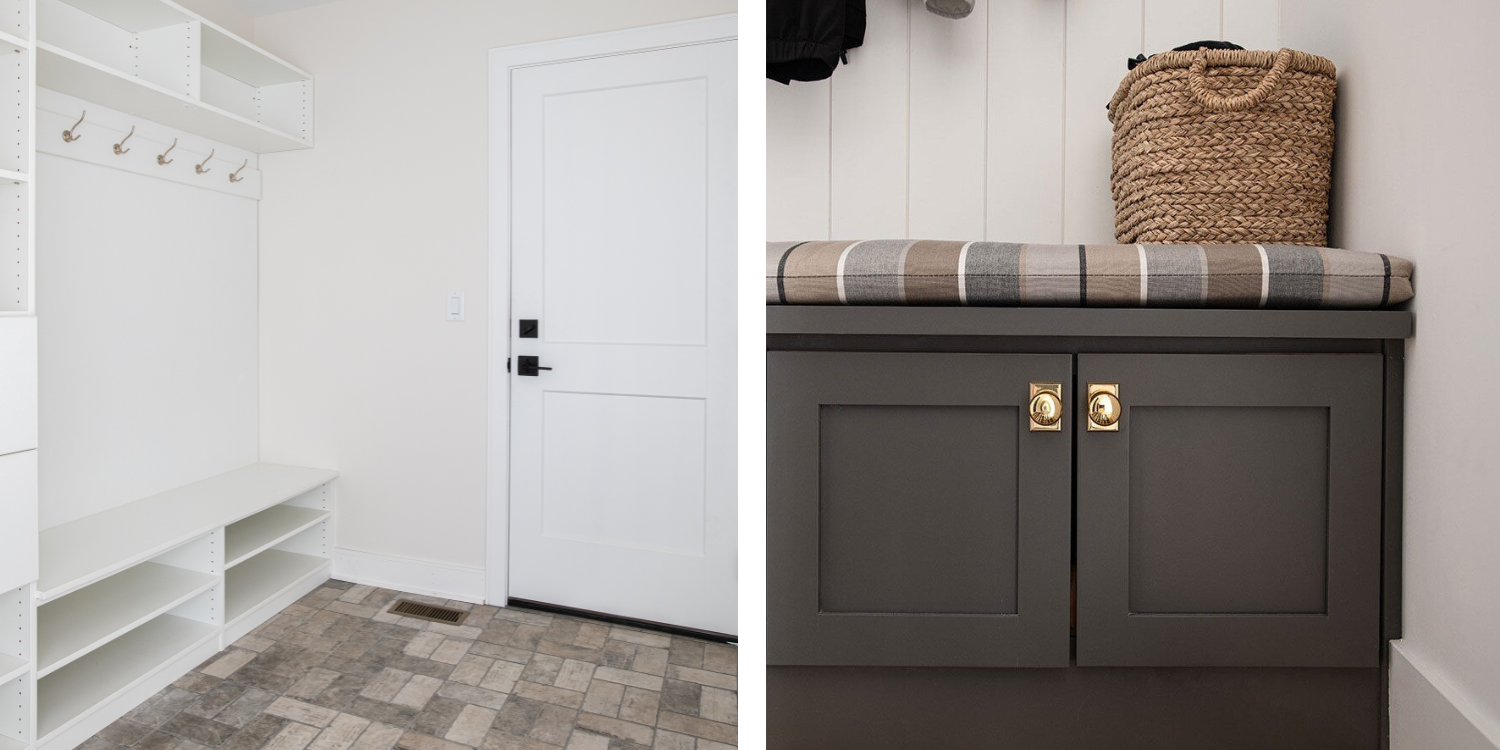

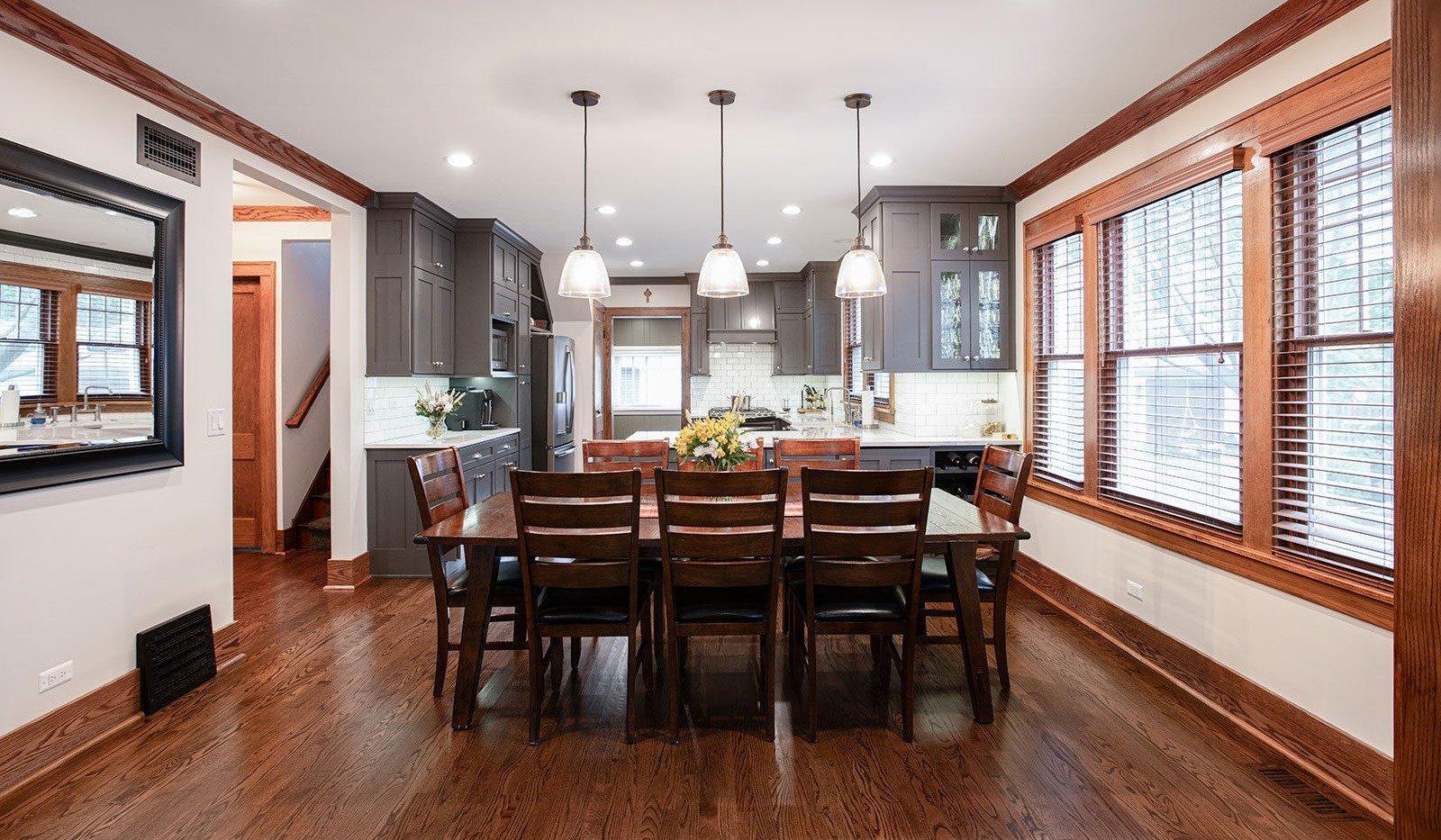
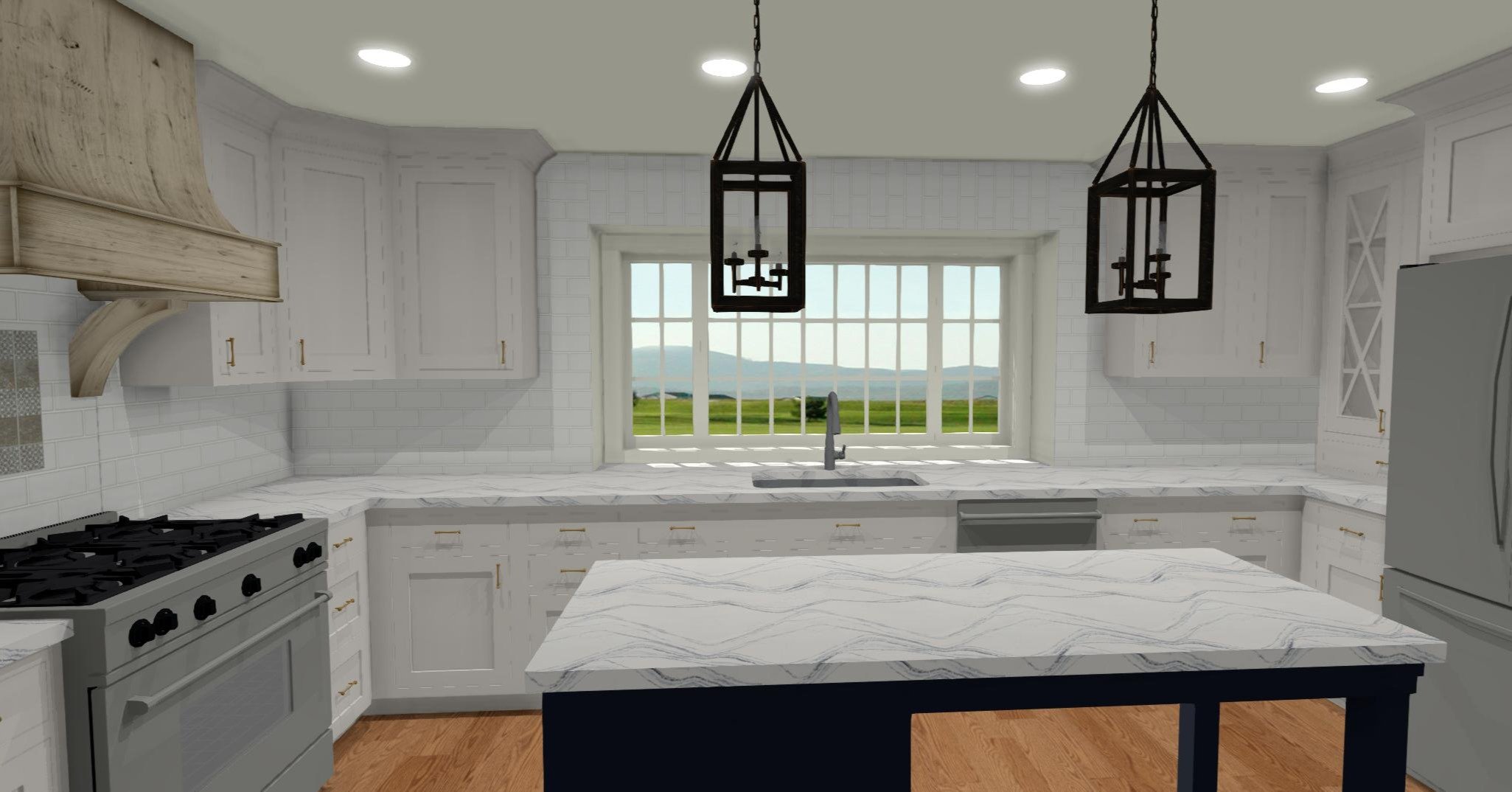
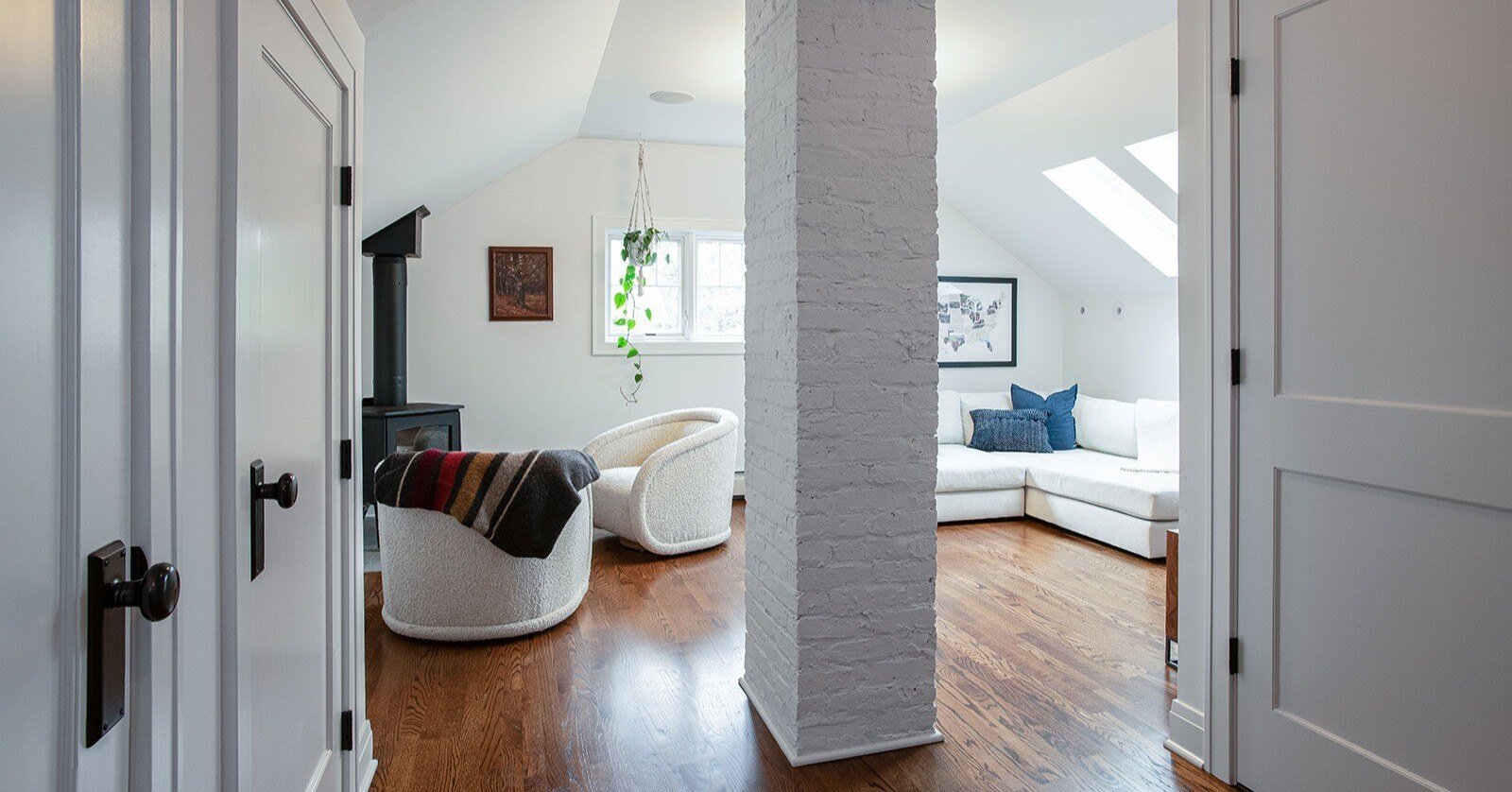
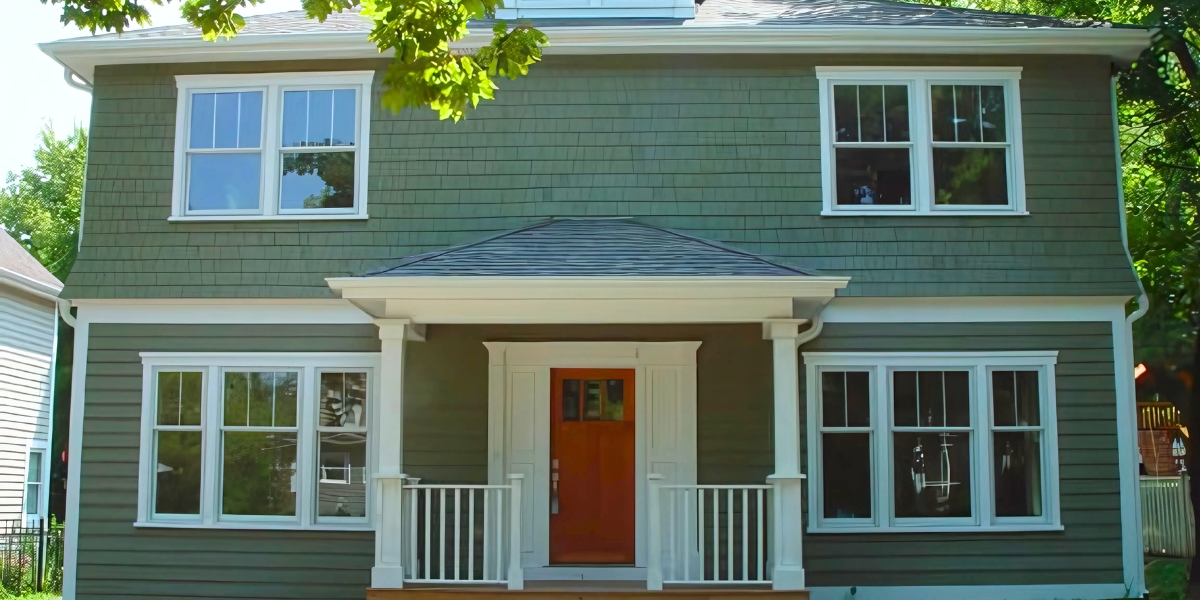
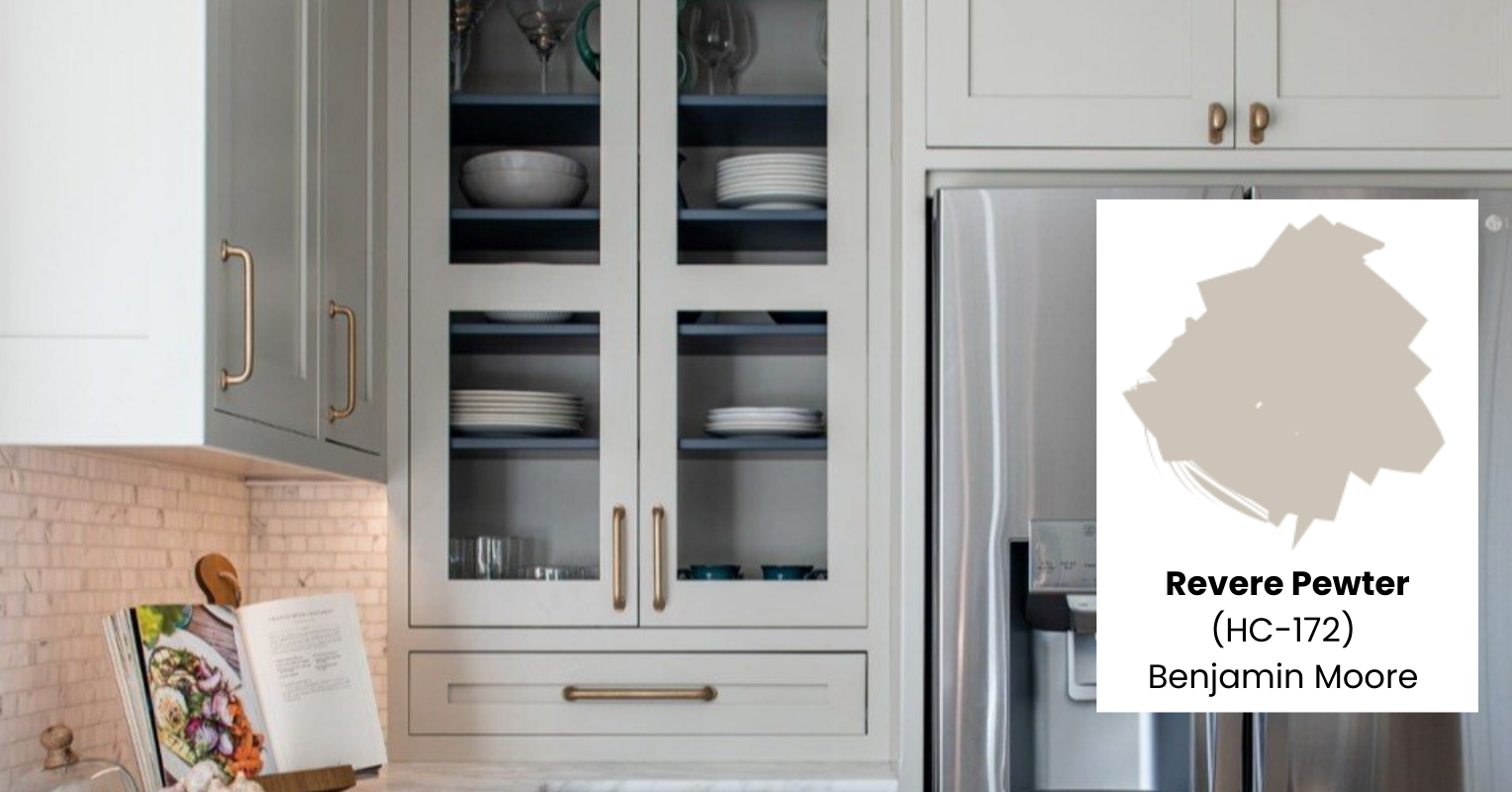
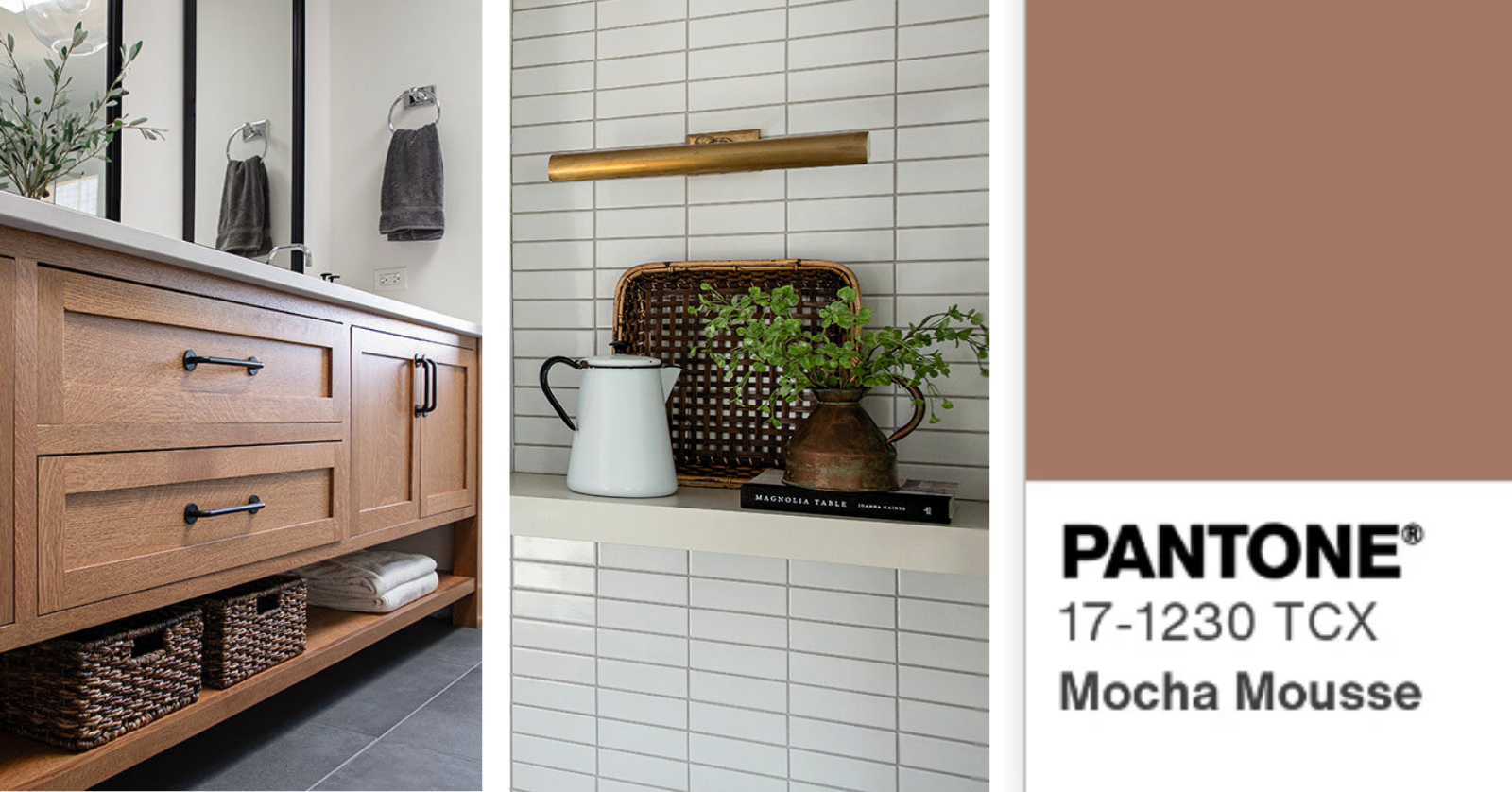
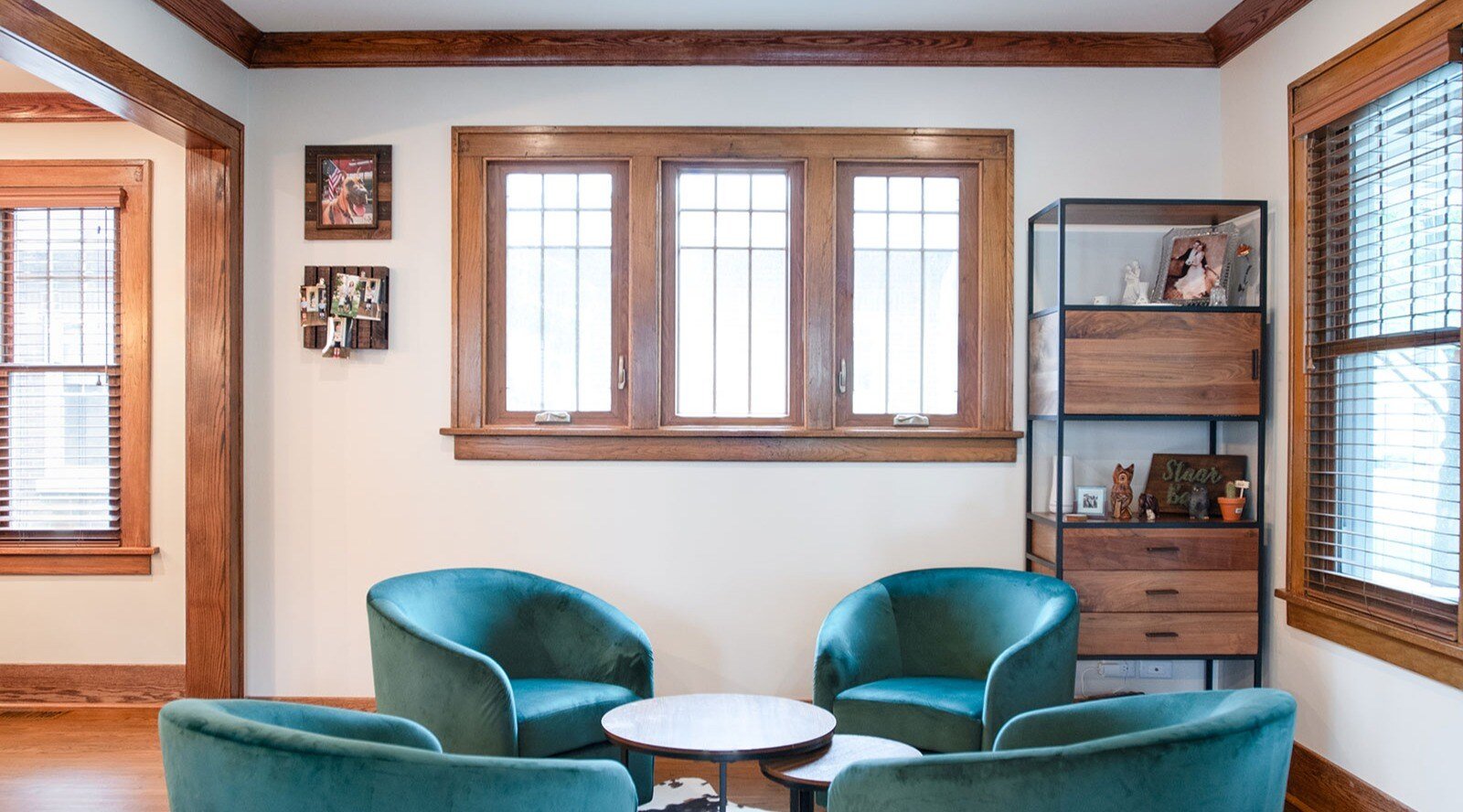


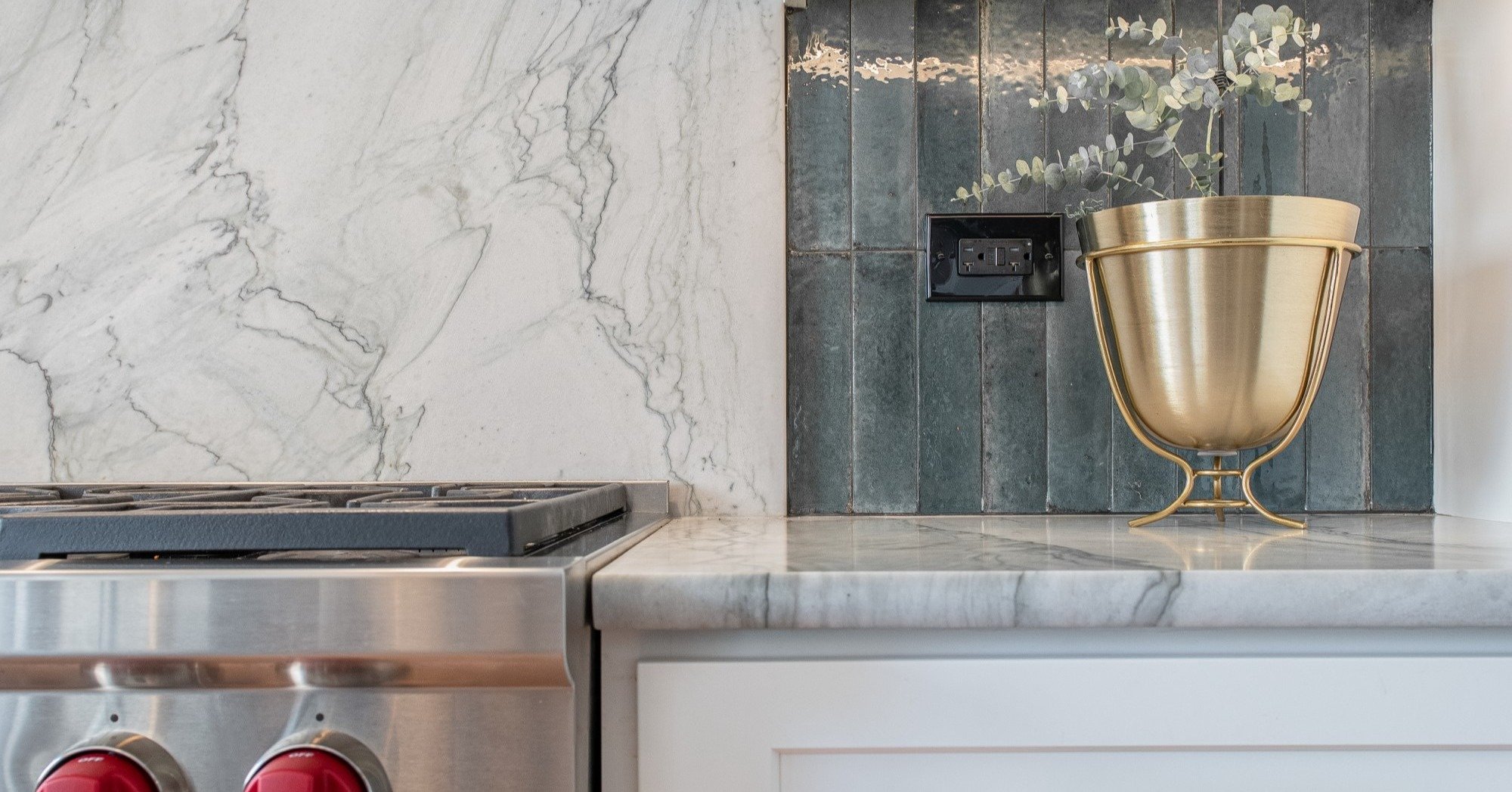
![How to Design an Open Floor Plan for Entertaining: Key Considerations [+Tips]](https://www.patrickafinn.com/hubfs/images/portfolio/Transitional%20First%20Floor%20Renovation/Arlington-heights-open-floor-concept-1.jpeg)
